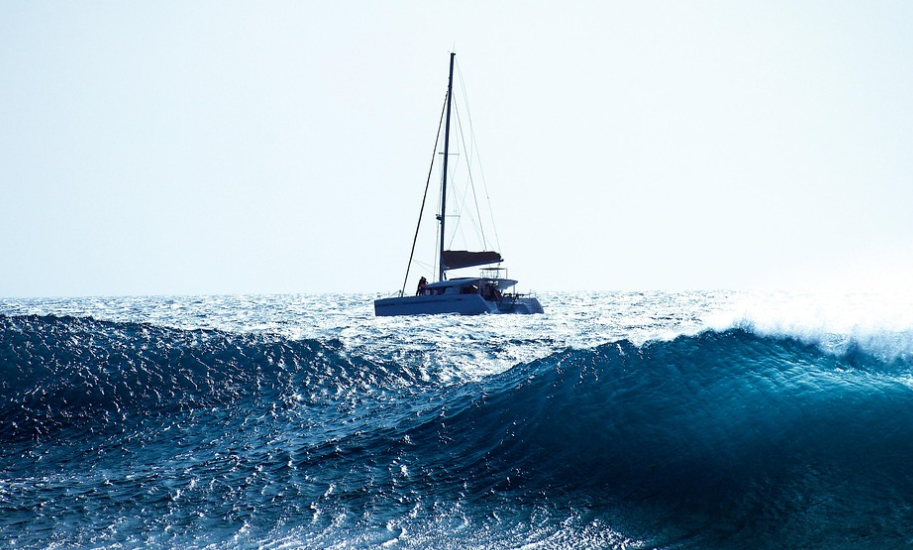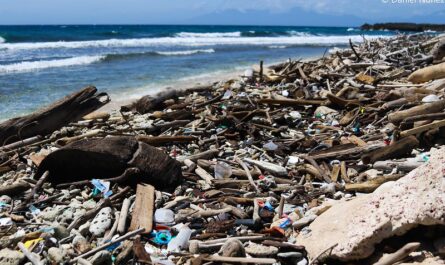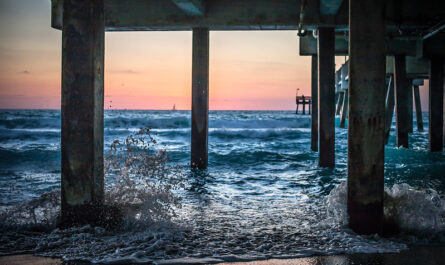Beneath the rhythmic slap of waves on Atlantic shorelines hides a colossal conveyor belt—an intricate network of currents that hauls heat, salt, nutrients, and carbon around the planet. The most famous branch of this system, the Atlantic Meridional Overturning Circulation (AMOC), begins when warm, salty Gulf Stream water travels northward, cools, grows dense, and plunges to abyssal depths south of Greenland. That sinking motion pulls surface water behind it, completing a loop that ultimately influences West African rainfall, Amazonian carbon uptake, European winter temperatures, and even the pace of Antarctic sea‑ice growth.
Over the past three decades, satellite altimetry, deep‑sea moorings, and refined climate models have converged on a worrying signal: the AMOC is weakening. One prime suspect is the accelerating loss of polar sea ice, which pours freshwater into the North Atlantic and dilutes the salinity‑driven density that powers the circulation. This article unpacks how shrinking Arctic and, to a lesser extent, Antarctic ice modulate Atlantic currents, what thresholds scientists fear, and how future scenarios could shape everything from fisheries to hurricane tracks.
1 The Physics Linking Ice, Salt, and Sinking Water
Sea ice differs from land‑based icebergs because it forms when seawater freezes, initially rejecting most salt and creating a surface layer of fresher liquid beneath. Two critical processes occur as the climate warms:
- Freshwater Injection – Melting first‑year ice and export of older floes flush low‑salinity water into the Labrador and Greenland seas. Fresher water is lighter, making it less willing to sink.
- Brine Rejection Decline – In a healthy freeze–thaw cycle, new sea ice expels brine, salting the water column and helping deep convection each winter. With less new ice forming, that seasonal salinity boost weakens.
Together, these effects can lubricate a density‑stratified “cap” on the ocean, stifling the very overturning that breathes life into the Atlantic circulation.
2 Observational Clues: Is the Conveyor Already Slowing?
Since 2004, the RAPID mooring array at 26.5° N has monitored AMOC transport like an EKG for the ocean. Year‑to‑year noise is high—winds, eddies, and measurement error can mask trends—but multi‑decadal analyses now indicate a persistent 10–15 percent decline relative to mid‑20th‑century reconstructions. Complementary evidence comes from:
- Paleoclimate Proxies – Ice cores and coral fossils show past AMOC slowdowns coinciding with meltwater pulses, such as the Younger Dryas cold snap ~12,800 years ago.
- Sea‑Surface Temperature “Fingerprint” – A patch of anomalously cool water south of Greenland, dubbed the “cold blob,” appears in both observations and models when AMOC weakens, hinting the present ocean is echoing ancient disruptions.
- Arctic Hydrography – The Beaufort Gyre, a clockwise Arctic surface current, has accumulated an extra 20,000 cubic kilometres of fresh water since the 1990s. Should westerly wind patterns flip, that cache could release into the North Atlantic like a freshwater bomb.
3 Greenland and Arctic‑Ocean Melt: Magnitude and Timing
Glaciologists estimate that Greenland’s ice sheet currently loses about 260 billion tonnes of mass per year—roughly 0.75 millimetres of global sea‑level rise annually. Yet it is the local salinity change, not sea level, that matters for AMOC strength.
- Direct Fluxes – Meltwater rivers emerging at glacier grounding lines spread buoyant lenses tens of kilometres offshore, altering near‑surface stratification.
- Iceberg Mélange – Calving events scatter thousands of icebergs into shipping lanes; as they melt, they freshen open‑ocean convection zones.
- Sea‑Ice Free Summers – Climate models project that by mid‑century, parts of the central Arctic Ocean could be ice‑free in September, injecting additional pulses of dilute water each autumn.
The timing is crucial. Winter is when polar surface water typically cools, densifies, and cascades downward. If too much freshwater lingers into December, deep mixing may fail, hobbling the AMOC for the following year.
4 The Antarctic Wild Card
While most attention focuses on the North Atlantic, meltwater from Antarctica rides ocean and atmospheric pathways toward the equator and can still influence AMOC. Recent studies reveal that:
- Melting ice shelves freshen the upper Southern Ocean, invigorating westerly winds and altering wave patterns that propagate north as Rossby waves.
- Some models show Antarctic meltwater indirectly slowing AMOC by reinforcing stratification in the South Atlantic, thus feeding back on the global overturning loop.
In essence, both poles tug on the same conveyor, raising the stakes for global climate policy.
5 Critical Thresholds: Collapse, Hysteresis, or Gradual Softening?
Scientists debate whether the circulation has a sharp tipping point—akin to switching off a pump—or whether it weakens smoothly. Complex models offer three broad scenarios:
- Soft Landing – Freshwater fluxes weaken but never break the density gradient; AMOC slows another 20–40 percent by 2100, altering climate yet remaining functional.
- Threshold Exceeded – A sudden pulse of meltwater (from Greenland lake outburst or Beaufort Gyre reversal) tips the balance, triggering decades‑long shutdown. Recovery might require freshwater dilution via precipitation changes or centuries of salinity rebound.
- Hysteresis Loop – Even if emissions later fall, the system might not reboot until external salinity forcing reverses well beyond historical norms, locking in altered climates for generations.
While a full collapse this century appears improbable according to the median of 34 global models, the low‑probability high‑impact nature of a shutdown—massive regional cooling, sea‑level spikes along North American coasts, disruption of monsoons—makes it a risk scientists cannot ignore.
6 Climate Consequences of a Weaker AMOC
Europe’s Weather Roller Coaster
Contrary to Hollywood lore, the continent would not plunge into an ice age overnight, but models suggest winter temperatures could drop 2–5 °C in the British Isles and Scandinavia if AMOC weakens by half. Storm tracks may shift southward, altering rainfall patterns and challenging agriculture.
Eastern Seaboard Sea‑Level Rise
Slower current means less water pulled away from the U.S. Mid‑Atlantic shoreline, adding up to 30 centimetres of regional sea‑level rise on top of global averages—enough to amplify storm surge threats.
Tropical Rainfall Belts
Heat exports via AMOC help anchor the Intertropical Convergence Zone. A weaker conveyor can nudge this rain belt southward, drying parts of the Sahel while soaking Brazil’s Northeast, with implications for food security and hydro‑power.
Hurricane Activity
Sea‑surface warmth fuels cyclones. Paradoxically, a colder North Atlantic from reduced heat transport might slightly suppress hurricane intensity, yet shifting wind shear patterns could steer storms closer to Europe or alter U.S. landfall statistics.
7 Ecological and Economic Ripples
Fisheries
Cod larvae in the Labrador Sea rely on currents for nutrient delivery; altered circulation can skew plankton blooms, compressing food chains. Northward‑shifting isotherms already push mackerel and herring into contested waters, stoking international quota disputes.
Carbon Sink Feedbacks
Deep‑water formation sequesters atmospheric CO₂. A sluggish AMOC means less carbon drawn into the abyss, leaving more in the air and accelerating warming—an example of a positive feedback loop.
Shipping and Infrastructure
Ice‑free Arctic summers open new trade routes, but a fresher, stormier North Atlantic complicates navigation. Port planners from Rotterdam to Halifax must weigh future dredging and surge defenses against uncertain current trajectories.
8 Mitigation and Monitoring: Navigating an Uncertain Future
Reducing Emissions
The root driver is greenhouse‑gas warming; curbing it slows ice melt. IPCC scenarios show that limiting warming to 1.5 °C cuts projected AMOC weakening roughly in half compared with 2 °C pathways.
Targeted Geoengineering?
Speculative ideas include pumping saline deep water from below melt zones or artificially thickening ice. Most remain technologically daunting and ethically fraught.
Enhanced Observation Networks
Expanding mooring lines into the Labrador Sea, deploying autonomous Argo floats under ice, and fielding satellite missions that detect salinity with kilometre‑scale resolution will sharpen early‑warning systems.
Beaufort Gyre Watch
Oceanographers now treat the Gyre’s freshwater dome as a ticking clock. Continuous monitoring of salinity and wind regimes could provide months‑to‑years notice before a major freshwater dump.
9 What Individuals and Policymakers Can Do Today
- Support Arctic Research Funding – Robust data allow better models, which in turn guide infrastructure investments.
- Advocate for Ambitious Emissions Cuts – Local campaigns feed into national commitments critical for polar stability.
- Climate‑Proof Coastal Cities – Incorporate sea‑level uncertainty bands that include AMOC‑related surges when designing levees or zoning floodplains.
- Invest in Adaptive Agriculture – Diversify crop portfolios to hedge against rainfall‑pattern volatility linked to ocean‑current shifts.
Conclusion: A Delicate Balance Worth Protecting
Ultimately, the story of shrinking sea ice and a faltering Atlantic current is less a prewritten fate than a vivid illustration of Earth’s sensitivity to human choices. Each incremental ton of carbon determines whether the AMOC settles into a manageable slowdown or lurches toward a destabilizing threshold; every investment in clean energy, coastal resilience, and robust Arctic science nudges the system back toward equilibrium. By recognizing that the invisible threads connecting polar melt to mid‑latitude cities form a single, interdependent tapestry, we move from passive observers of distant ice loss to active stewards of the planetary machinery that moderates our weather, nourishes our fisheries, and absorbs our waste heat. The next few decades will reveal whether we can translate that awareness into decisive action—averting the most disruptive scenarios and ensuring that the Atlantic conveyor continues to temper climates, sustain ecosystems, and underpin human prosperity for centuries to come.
Sea ice might seem remote—white expanses glimpsed only in documentaries—but its meltwater fingerprints are global. Each tonne of ice lost in the Arctic or Antarctica subtly modulates the salinity, density, and ultimately the vigor of Atlantic currents that stabilize climate, nourish ecosystems, and buffer coastlines. Current models project significant but not catastrophic weakening of the AMOC this century, offering a window to act. The outcome hinges on emissions trajectories, rapid observational advances, and resilient policy frameworks. Safeguarding the planet’s invisible conveyor is not just an oceanographic challenge; it is a societal imperative entwined with food, water, and economic security for billions. The future still holds multiple paths—some disruptive, others manageable—and our collective choices today will decide which current carries us forward.



